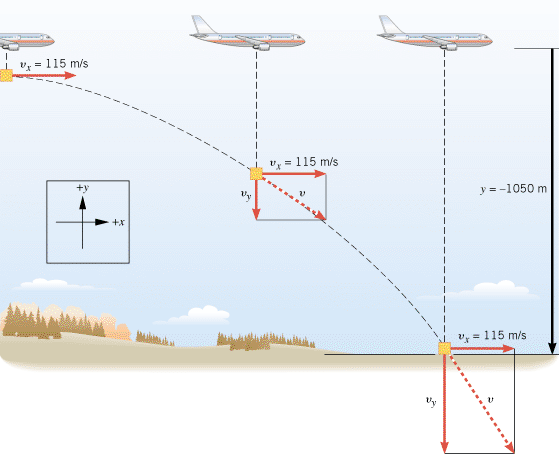Figure 3.9 shows an airplane moving horizontally with a constant velocity of +115 m/s at an altitude of 1050 m. The directions to the right and upward have been chosen as the positive directions. The plane releases a “care package” that falls to the ground along a curved trajectory. Ignoring air resistance, determine the time required for the package to hit the ground.
 |
|
Reasoning
The time required for the package to hit the ground is the time it takes for the package to fall through a vertical distance of 1050 m. In falling, it moves to the right, as well as downward, but these two parts of the motion occur independently. Therefore, we can focus solely on the vertical part. We note that the package is moving initially in the horizontal or x direction, not in the y direction, so that v0y![]() =
=![]() 0 m/s. Furthermore, when the package hits the ground, the y component of its displacement is y
0 m/s. Furthermore, when the package hits the ground, the y component of its displacement is y![]() =
=![]() –1050 m, as the drawing shows. The acceleration is that due to gravity, so ay
–1050 m, as the drawing shows. The acceleration is that due to gravity, so ay![]() =
=![]() –9.80 m/s2. These data are summarized as follows:
–9.80 m/s2. These data are summarized as follows:
y-Direction Data
y
ay
vy
v0y
t
–1050 m
–9.80 m/s2
0 m/s
?
With these data, Equation 3.5b ( ) can be used to find the fall time.
) can be used to find the fall time.
Problem solving insight
The variables y, ay, vy, and v0y are scalar components. Therefore, an algebraic sign (+ or –) must be included with each one to denote direction.
Solution
Since v0y![]() =
=![]() 0 m/s, it follows from Equation 3.5b that
0 m/s, it follows from Equation 3.5b that  and
and
 |